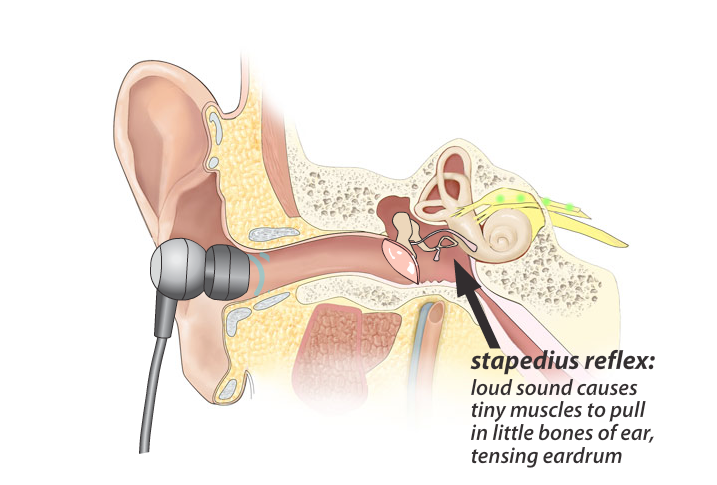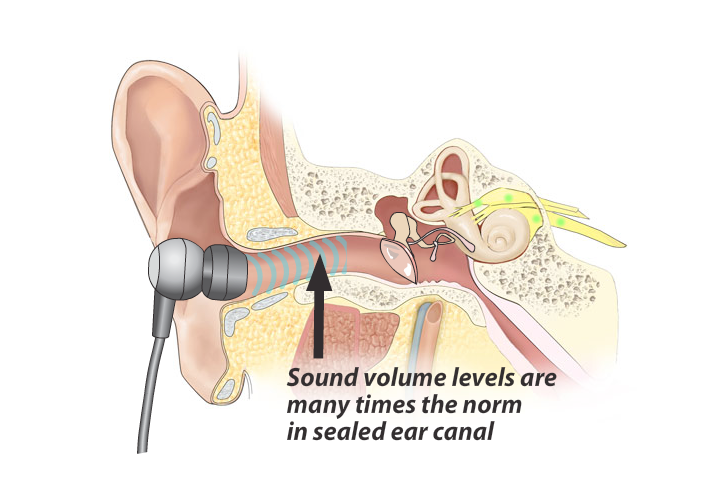Through the Diaphonic Lens

Stephen Ambrose's music teacher father once posed a difficult question to his son: "What instrument don't they make anymore?" The younger Ambrose was stumped. "The chamber," his father responded. Ambrose filed the exchange away, not quite sure what to make of it, and went on to a career as a musician and sound engineer. During the mid-1970s (working as a live sound engineer for Stevie Wonder and Steve Miller, among others), he wound up pioneering the in-ear monitor, which revolutionized both stage monitoring and personal listening.
But despite their widespread acceptance, in-ear monitors have some well-known issues (shared by hearing aids, which Ambrose has also worked on): some wearers report a "pounding" sensation; others find it impossible to listen at a reasonable level with acceptable fidelity; and for some, so-called "hearing fatigue" - a feeling of strain, discomfort, and eventual pain - makes it difficult to wear in-ears for any length of time.
Ambrose eventually began to feel that he might have missed the point the first time around in failing to account for the acoustics and biomechanics of the ear canal itself, instead "treating the ear as a guitar jack." In search of a solution, he decided to find out exactly what was going on within the ear canal. And returning - obliquely - to his father's question, he began a lengthy research project into the behavior of that particular chamber.
 It all turned out to be rooted in physiology. Ambrose, Robert Schulein and Samuel Gido (his fellow researchers at Asius Technologies) found a possible solution in the mechanics of the stapedius (or "acoustic") reflex, a built-in defense mechanism that tenses the muscles supporting the middle ear, dampening the energy reaching the cochlea by as much as 50 dB.
It all turned out to be rooted in physiology. Ambrose, Robert Schulein and Samuel Gido (his fellow researchers at Asius Technologies) found a possible solution in the mechanics of the stapedius (or "acoustic") reflex, a built-in defense mechanism that tenses the muscles supporting the middle ear, dampening the energy reaching the cochlea by as much as 50 dB.
This isn't a psychological or perceptual effect. When it encounters intense sound pressure levels, your middle ear actually turns the volume back down in response. (Singing, humming, and speaking trigger the same effect, which is why received wisdom holds that it's a good idea to hum if you know you're going to encounter an explosion, cymbal hit, or other extremely loud sound).
 All's well so long as the acoustic reflex is triggered occasionally, but according to Ambrose and his team, things change significantly when the ear canal is completely closed by an IEM. With the sealed canal, sound pressure behaves - more or less - like a piston in an engine cylinder, transferring the motion of the earphone's driver mechanism directly to the eardrum, which responds with overexcursions - movements up to 1,000 times greater than the tiny motions observed during normal listening (for a rough illustration of the eardrum's response, there's a handy video posted on the Asius site).
All's well so long as the acoustic reflex is triggered occasionally, but according to Ambrose and his team, things change significantly when the ear canal is completely closed by an IEM. With the sealed canal, sound pressure behaves - more or less - like a piston in an engine cylinder, transferring the motion of the earphone's driver mechanism directly to the eardrum, which responds with overexcursions - movements up to 1,000 times greater than the tiny motions observed during normal listening (for a rough illustration of the eardrum's response, there's a handy video posted on the Asius site).
 An insertion gain effect can boost sound pressure levels in the resulting sealed chamber some 20 dB, so even with relatively quiet input, levels can get high enough (the precise figure varies from person to person, but it's in the neighborhood of 90 dB) to trigger the stapedius reflex repeatedly - this oscillatory pressure and resultant strain may be what's responsible for hearing fatigue.
An insertion gain effect can boost sound pressure levels in the resulting sealed chamber some 20 dB, so even with relatively quiet input, levels can get high enough (the precise figure varies from person to person, but it's in the neighborhood of 90 dB) to trigger the stapedius reflex repeatedly - this oscillatory pressure and resultant strain may be what's responsible for hearing fatigue.
Matters are made worse by the fact that as their middle ears try valiantly to protect the cilia lining the cochlea from damage, listeners tend to turn things up even further to compensate, in a vicious cycle that can lead, says Ambrose, not only to fatigue but to damage to the eardrum itself, visible as callouses that give the membrane a "leathered" appearance.
(illustrations: Zina Deretsky, National Science Foundation)
- Log in or register to post comments




















































